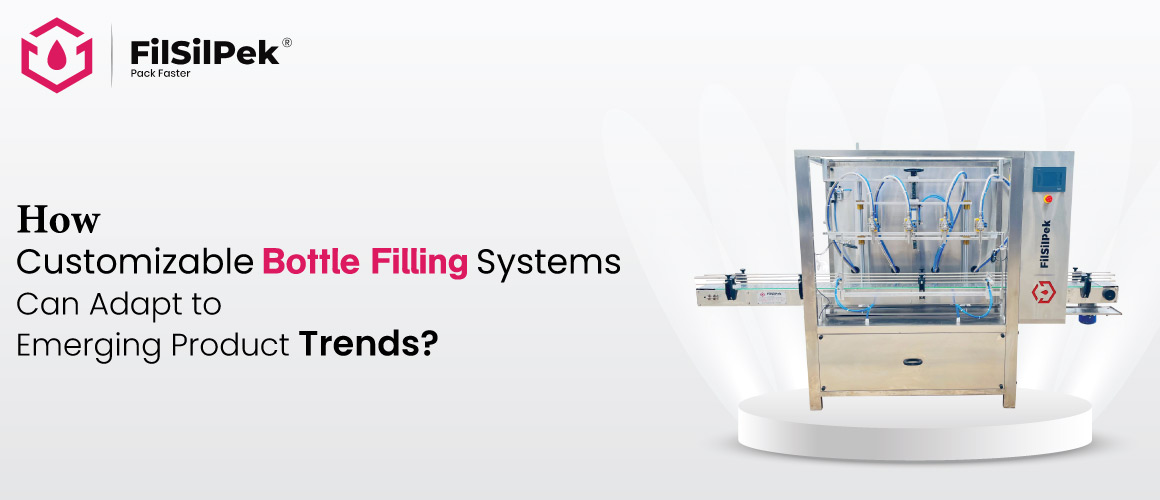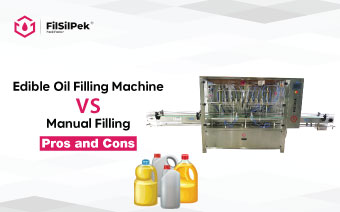How Customizable Bottle Filling Systems Can Adapt to Emerging Product Trends?
Product and packaging trends are evolving rapidly across industries like food and beverage, pharmaceuticals, and cosmetics. Consumers now expect diverse options, from eco-friendly packaging to personalised bottle designs. This shift demands flexibility in production, requiring manufacturers to handle a wide range of bottle sizes, materials, and formulations efficiently while meeting market expectations for innovation and sustainability.
Customizable bottle filling systems provide the adaptability manufacturers need to stay competitive. Unlike traditional machines, these systems can easily adjust to different viscosities, packaging formats, and regulatory requirements.
In this article, we’ll discuss how these customizable solutions help businesses keep pace with emerging product trends and enhance production efficiency.
1. Multi-Format Filling Capabilities for Diverse Packaging
One of the major trends reshaping industries is the diversification of packaging formats. No longer confined to standard shapes and sizes, manufacturers are increasingly using custom packaging to differentiate their products. This presents challenges for traditional, single-format filling machines, which are designed for specific bottle dimensions.
Customizable filling systems, however, offer multi-format capabilities, enabling seamless switching between different bottle shapes, materials, and sizes—ranging from glass to PET, and from standard cylindrical bottles to more complex designs. These systems often employ adjustable conveyor systems, modular nozzles, and automated changeover features to minimise downtime during format transitions. Servo-driven, multi-axis adjustments further enhance precision and speed, allowing manufacturers to handle intricate packaging designs without manual intervention.
2. Viscosity Handling and Dosing Precision
Another critical factor in modern product trends is the ability to handle a wide range of product viscosities. Whether dealing with low-viscosity beverages or high-viscosity products like creams, gels, and syrups, filling systems must maintain precise control over fill volumes to minimise wastage and ensure consistency.
High-precision volumetric or piston-based filing systems offer superior control over liquid flow, adapting to different product viscosities with ease. These systems often incorporate rotary lobe pumps, which are ideal for viscous materials, or peristaltic pumps, commonly used for pharmaceutical applications requiring sterile conditions. Many customizable systems now feature advanced mass flow metres or magnetic flow metres, enabling accurate volumetric control without being affected by temperature or viscosity fluctuations.
Additionally, integrating inline product heating systems can help reduce the viscosity of certain products, allowing for smoother and faster filling, especially in industries working with waxy or thick formulations. This approach increases operational flexibility while maintaining precision in dosing.
3. Advanced Integration of Smart Sensors and Automation
The integration of Industry 4.0 technologies in bottle filling systems is transforming how production lines operate. Smart sensors, AI-driven data analytics, and real-time monitoring tools are now integral to customizable filling machines, allowing for predictive maintenance, error reduction, and real-time optimization.
Systems equipped with smart vision systems can verify fill levels, cap integrity, and label placement in real time, reducing manual quality checks. Similarly, machine learning algorithms can detect patterns in production anomalies, allowing for quicker fault detection and rectification. Feedback loops between the filling system and upstream processes—such as bottle feeding or cap placement—are increasingly automated, ensuring the synchronisation of various production stages and reducing bottlenecks.
Additionally, these systems can generate operational data, which can be analysed to track performance metrics like uptime, throughput, and filling accuracy. By leveraging this data, manufacturers can fine-tune machine settings for different products, maximising efficiency across varying product lines.
4. Compliance with Regulatory and Safety Standards
Industries such as pharmaceuticals and food production are governed by stringent regulatory standards, including cGMP (current Good Manufacturing Practices) and FDA regulations. Customizable bottle filling systems are designed with these regulations in mind, ensuring that manufacturers can adjust their processes to maintain compliance with changing requirements.
Systems now come with CIP (Clean-In-Place) and SIP (Sterilize-In-Place) capabilities, which are essential for maintaining hygiene in regulated industries. These features allow for automated cleaning cycles without disassembling equipment, significantly reducing downtime and the risk of cross-contamination. Additionally, HEPA filtration systems can be integrated into filling environments to ensure sterile air supply during the filling process, particularly important for aseptic packaging in pharmaceuticals.
Customizable systems can also incorporate validation tools, ensuring that every batch meets the necessary regulatory criteria. Whether through advanced data logging for batch records or integration with 21 CFR Part 11 compliant software systems, these machines support traceability and regulatory audits.
5. Sustainability and Reduced Waste
Sustainability is a driving force in today’s product trends, especially in the packaging industry. Manufacturers are increasingly pressured to reduce material usage, energy consumption, and product waste. Customizable bottle filling systems are addressing this need by offering features that minimise product overfill, optimise material usage, and reduce energy consumption.
For example, systems utilising vacuum-assisted filling technology can ensure precise fills for low-density or foam-prone liquids, minimising spillage. Additionally, many manufacturers are adopting lightweight, recyclable bottles and biodegradable materials. Customizable filling machines can be adapted to accommodate these newer, often more delicate packaging formats, which require gentler handling during the filling and capping process.
On the energy front, manufacturers are increasingly turning to servo-driven motors, which offer energy-efficient operation while maintaining high-speed precision. These motors provide enhanced control over torque and motion, allowing for more efficient operation compared to pneumatic-driven systems.
6. Modular Design for Scalability
As product lines expand, manufacturers need equipment that can scale with them. Customizable bottle filling systems often feature modular designs, allowing businesses to add or remove filling heads, expand capacity, or incorporate additional automation technologies as needed. This ensures that manufacturers are not locked into a single system configuration and can adjust their filling capacity as product demand fluctuates.
For example, a system with dual-lane or multi-lane filling capabilities allows for increased throughput without requiring additional production lines. Likewise, automatic changeover systems that adjust fill parameters based on pre-programmed product recipes can significantly reduce setup times when switching between product types or formats.
Wrapping it up
Customizable bottle filling systems offer a flexible solution for manufacturers looking to keep pace with evolving product trends. With the ability to handle diverse packaging formats, product viscosities, and regulatory requirements, these systems ensure that your production line remains efficient and adaptable as market demands shift.
If you’re looking to upgrade your filling systems to meet these challenges, contact us at [email protected]. Our team is ready to help you find the right solution to enhance your operations and drive your business forward.
Hair Oil Bottle Filling machine – What, How and Why ?
In manufacturing and production era, technology continues to play a pivotal role in enhancing efficiency and precision. One such innovation that has…
Edible Oil Filling Machine: Usage Consideration, Common TroubleShooting and Maintenance
Edible Oil Filling Machines emerge as efficiency-driven instruments in the modern era of packaging of businesses, orchestrating the meticulous packaging…
Edible Oil Filling Machine vs. Manual Filling: Pros and Cons
Have you ever wondered about the seamless flow of edible oil into bottles that grace our kitchen shelves? Filling those bottles is a critical step in the edible oil industry, and it comes with…



